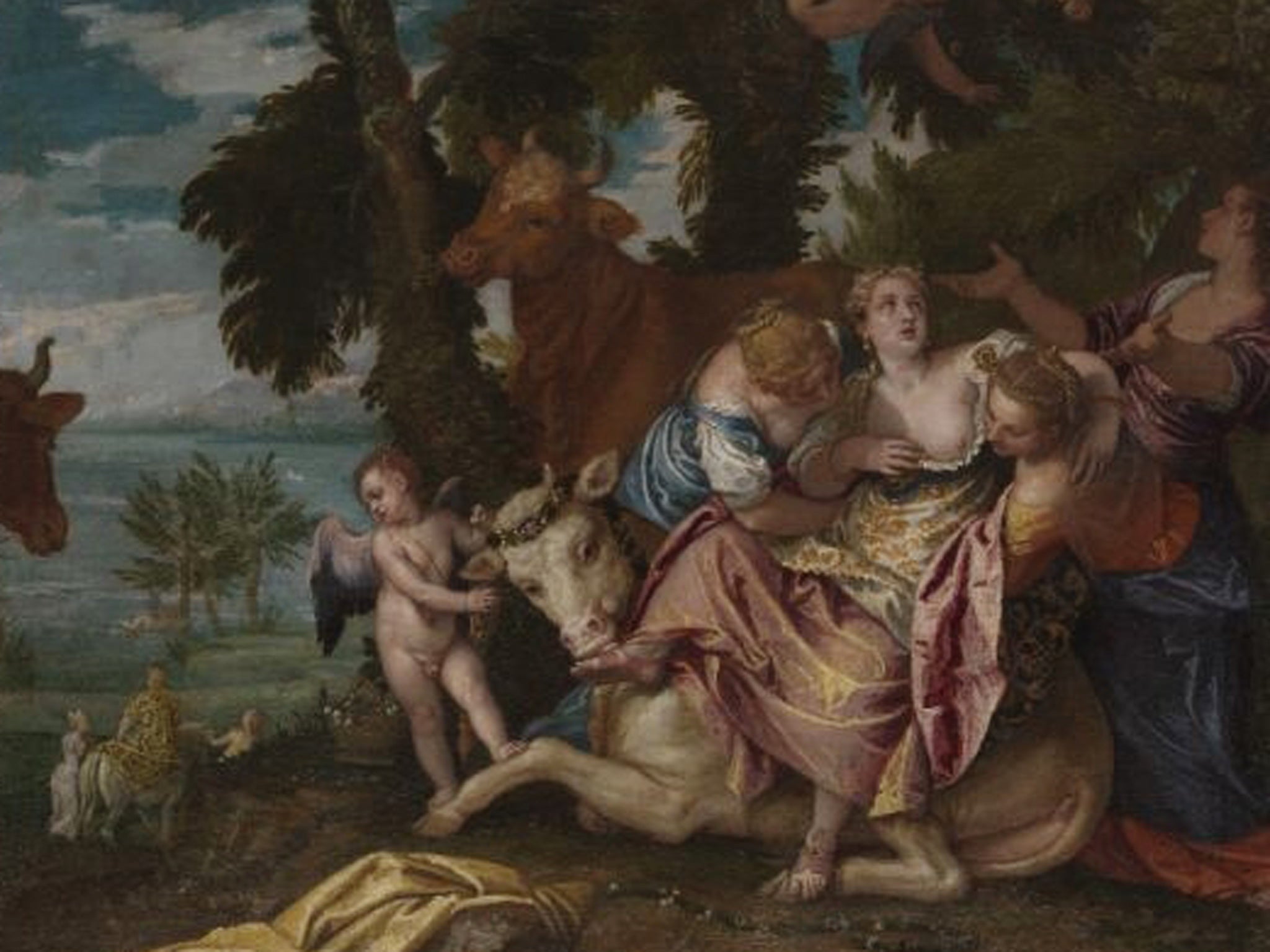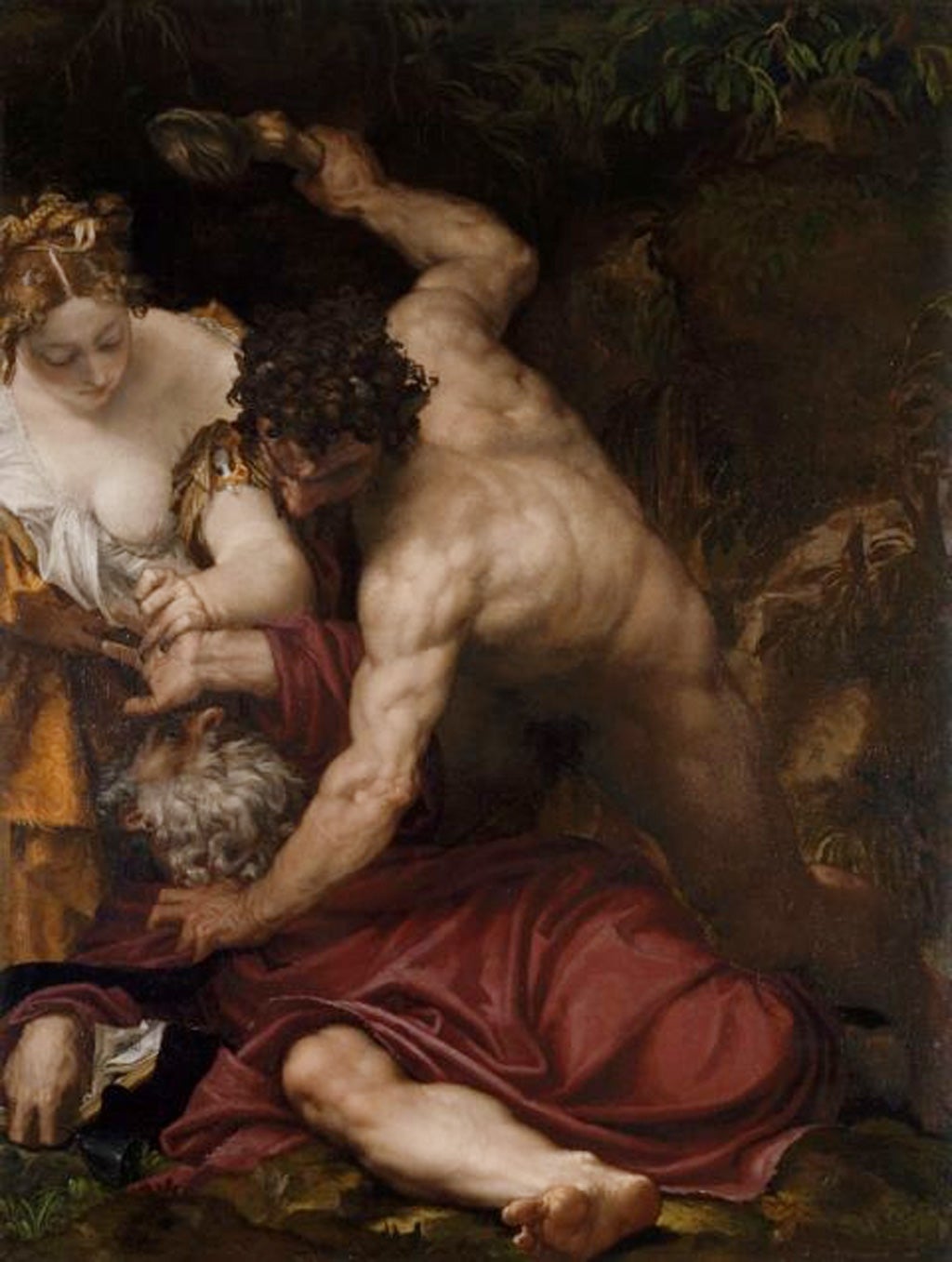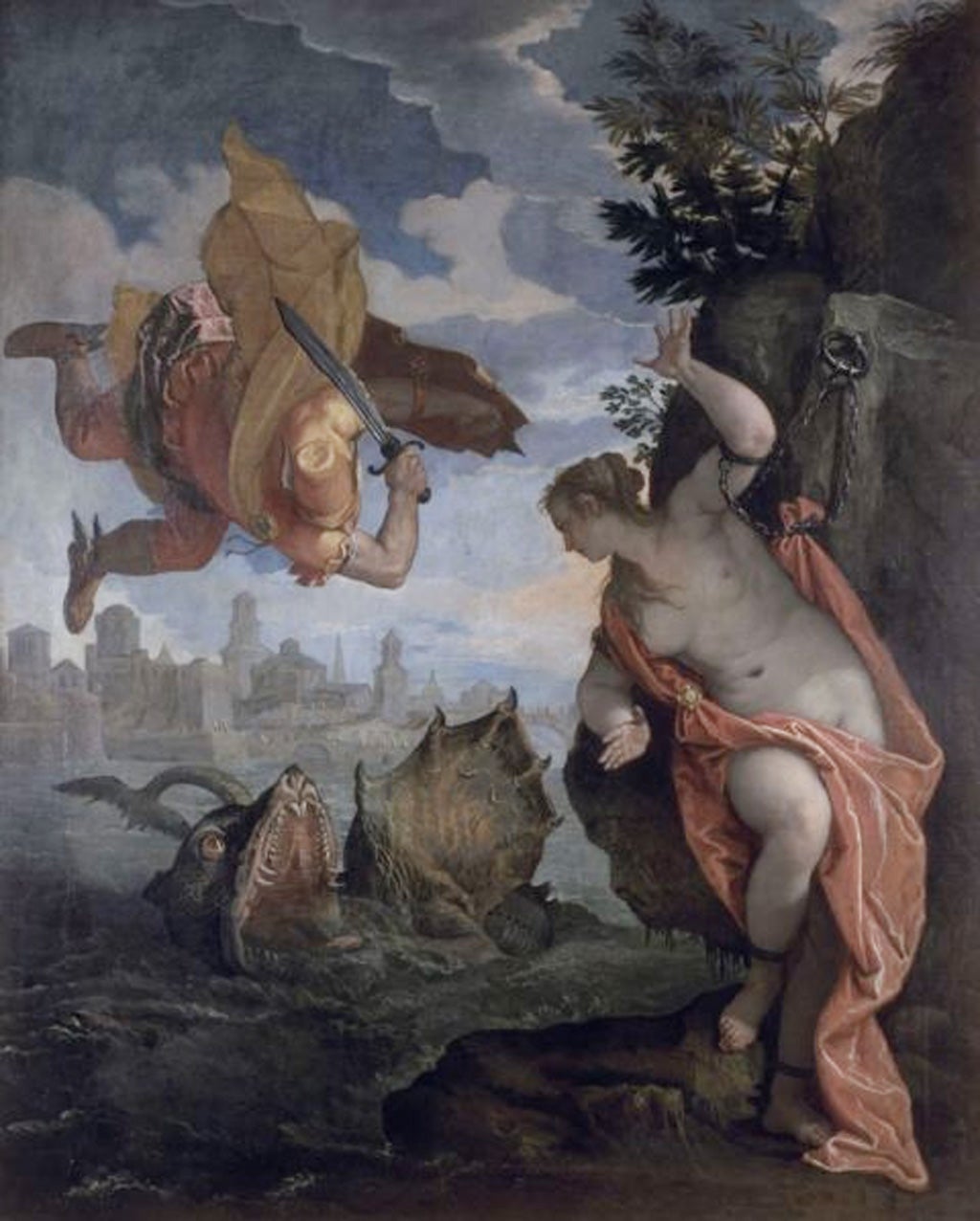Paolo Veronese, National Gallery exhibition: the gentle man of Verona
The 16th-century Italian Renaissance artist Paolo Veronese displayed tenderness and humanity in his powerful portraits of rape and death, discovers Zoe Pilger at a wonderful new exhibition

Your support helps us to tell the story
From reproductive rights to climate change to Big Tech, The Independent is on the ground when the story is developing. Whether it's investigating the financials of Elon Musk's pro-Trump PAC or producing our latest documentary, 'The A Word', which shines a light on the American women fighting for reproductive rights, we know how important it is to parse out the facts from the messaging.
At such a critical moment in US history, we need reporters on the ground. Your donation allows us to keep sending journalists to speak to both sides of the story.
The Independent is trusted by Americans across the entire political spectrum. And unlike many other quality news outlets, we choose not to lock Americans out of our reporting and analysis with paywalls. We believe quality journalism should be available to everyone, paid for by those who can afford it.
Your support makes all the difference.It was in the aftermath of the plague of the 1570s, which killed nearly a third of the population of Venice, including the city’s greatest artist, Titian, that Paolo Veronese painted his last works. These hang in the final room of the wonderful Magnificence in Renaissance Venice exhibition of 50 paintings by Veronese at the National Gallery. The Renaissance artist is renowned for his vivid use of colour, but the last works are remarkable for their darkness. Indeed, as the curator Xavier F Salomon says, “It’s as if night falls in every single canvas.” They are some of the most powerful and profound paintings on display. Veronese was a theatrical, often jubilant artist, but here the dark overwhelms the light and we become privy to a series of private tragedies.
One of the most startling is Lucretia (1580-5). This scene of suicide is quiet. It refers to the classical story of the rape of Lucretia by the son of the Etruscan king of Rome, described in Livy’s History of Rome. After revealing her violation to her father and husband, she stabbed herself through the heart rather than live with her shame. The story inspired a poem by Shakespeare and Britten’s opera.
Veronese is famous for painting sumptuous costumes of vibrant brocades, but here Lucretia’s gown is dark green, offsetting the luminous quality of her skin. Like many of his heroines, she appears to glow from within but her face is sickly. Her eyes are downcast rather than confronting the viewer, which suggests this is a private moment of deep anguish. It is a glimpse of her interior state. She wears luxurious emerald and gold jewels and there are pearls around her neck. She has dressed for the occasion. Most shockingly, she points a dagger at her heart. On closer inspection, the viewer can make out the slightest trickle of red. She has in fact already stabbed herself. The blood is draining out of her body. This is a slow and sensuous death.

The painting is one my favourites. Titian had painted a version of the story, Tarquin and Lucretia (1570-1), about a decade before. His is notable for its focus on the brutal moment of the rape itself. The naked and once again luminous Lucretia is shown backed on to a bed, her hands raised in protest while the rapist Sextus Tarquinius bears down on her, his knee between her legs, a dagger raised. The scene is more melodramatic. While Veronese affords Lucretia her own moment of tragedy, positioning her at the centre of her own story, both victim and now agent of her own death, Sextus is dominant in Titian’s scene. The violation is eroticised. Instead, Veronese humanises her.
Veronese is one of three painters associated with the magnificence of the Venetian Renaissance, as the title of this exhibition suggests. The others were Tintoretto and the older Titian, from whom Veronese possibly drew some of his subject matter. Titian had established the dominant mode of depicting mythological stories, but these paintings reveal the nuances of Veronese’s own approach. Salomon’s erudition is evident: works have been borrowed from around the world to supplement the gallery’s own impressive collection. This is the artist’s first monographic exhibition in the UK.
Veronese was born in Verona in 1528 and was named after the city. Salomon says that “his life was pretty boring, actually”. His family were stonecutters. He arrived in Venice in his twenties. He got married, had children, and travelled little. But his paintings testify to a spectacular imagination and skill. He painted canvases with fast fluency, almost in a fresco technique, and received many prestigious commissions throughout his lifetime. Most often he painted opulence – reflecting back to his aristocratic and religious patrons how life should be lived. These are works of aspiration. In this way, they are very modern. After surviving the plague, Veronese caught a chill during a religious procession in 1588 and died from pneumonia at the relatively young age of 60.

There is great understanding of the mechanics of story-telling in these paintings. Often Veronese paints the moment before the main event, imbuing these familiar myths and religious scenes with a degree of suspense. His sensitivity to theatrical composition is shown through a willingness to hold back. This allows the viewer to imagine for herself what comes next. Veronese was highly acclaimed during his lifetime and he operated a busy workshop. Salomon points out that as his fame grew, the quality of some of his works began to decline. Like contemporary artists who employ vast teams of assistants and rarely make their own work, Veronese often just added the finishing touches to paintings as they left his workshop. This was the case for another popular scene of female violation, The Rape of Europa, which Veronese’s workshop produced in many different formats. The version from 1575-80 that appears here was painted by Veronese himself. It is fascinating.
The story comes from Ovid’s Metamorphoses. Zeus fell in love with Europa and transformed himself into a white bull and appeared in a meadow where Europa was amusing herself. She was afraid at first and then realised that he was tame. Zeus the bull then carried her off into the middle of the sea, where Europa finally understood that she had been abducted and it was too late. This is a story of sweetness turned into horror. Once again, Veronese paints the moment before the rape. Europa is shown in the meadow in the foreground of the painting with one creamy breast exposed, swathed in plush pink fabric. She sits on top of the bull, who is licking her foot in a foreshadowing of the violation to come. Putti, or winged children, rain down roses on the pair.
In the distance, two further scenes are revealed. There is Europa riding the bull towards the sea. Further on, the bull has carried Europa into the sea. Her body is twisted back towards the shore and she is waving to the earlier images of herself, indeed, to the earlier stages of the story. It is not clear whether she is happily waving goodbye or signalling for help.Veronese brilliantly shows time unfolding in one pictorial space. He demurs from painting the scene of the rape itself, and instead creates dramatic tension by showing the events leading up to it. By contrast, Titian’s painting of the same story about 15 or 20 years before focuses on the moment of violation. In his version, Europa is already out to sea. She clings to the bull’s horn, terrified. Her legs are flailing and open, which once again eroticises her submission. Veronese’s painting is less sensationalist and more respectful to the figure of Europa. He does not glorify or even aestheticise her humiliation. The fact that it is not depicted on the canvas makes it all the more horrifying. There is a gap in the story; perhaps such horror cannot be conveyed through painting.

Other paintings by Veronese which dignify their female subjects, rather than show them as mere masochistic martyrs or damsels in distress, are the two versions of The Dream of St Helena. Both refer to the story of St Helena, wife of the Emperor Constantine, who had a vision of angels in a dream. It’s possible that Veronese was drawn to the story because his wife was called Elena. I prefer the earlier version, painted around 1570. St Helena is shown asleep by a window. She wears a rich pink and peach gown, but she is at ease, even, as the director of the gallery Nicholas Penny suggests, “improper”. Her hand is rested casually between her thighs. The angels hover above her. This is her private dream world turned outwards so the viewer can see it. Again, Veronese gives his heroine an inner life of her own. In the later version, painted 1575-80, the scene is less natural and less affecting. St Helena’s pose is constricted by her elaborate costume; she is stiffer.
Despite the disintegration of pigment over the centuries, turning some of these brilliant blue skies grey, Veronese’s colours continue to dazzle. They are a wonder. This exhibition is important because it shows the tenderness and restraint of a painter often associated with spectacle. Indeed, critics in the 19th century dismissed Veronese on the grounds that he was a decorative artist. More recently, attempts have been made to cite the great intellectual profundity of his works. What emerges here is an artist not in thrall to Titian, but responding to the oldest myths with his own finely tuned sense of humanity.
Veronese: Magnificence in Renaissance Venice, National Gallery, London WC2 (020 7747 2885) to 15 June
Join our commenting forum
Join thought-provoking conversations, follow other Independent readers and see their replies
Comments